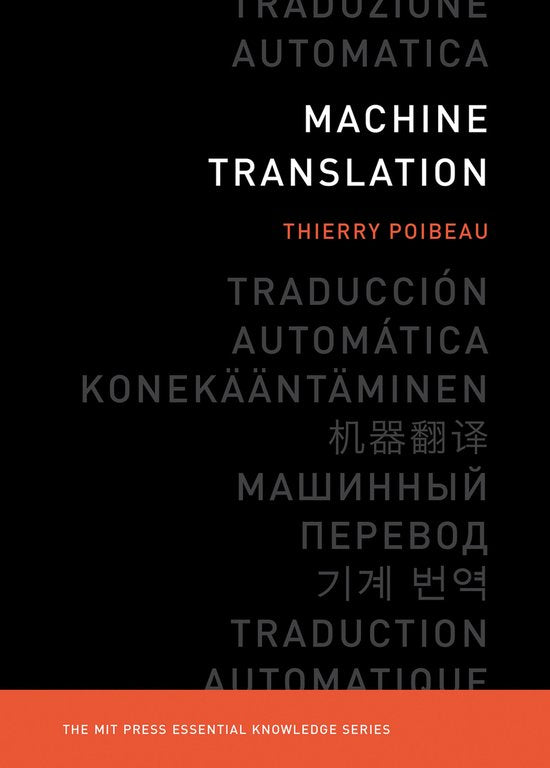De Boeken van Wouter
Machine Translation
Machine Translation
Kan beschikbaarheid voor afhalen niet laden
Verzending is beschikbaar op maandag en vrijdag
Meestal verzonden binnen 1–4 dagen na bestelling
4 boeken kopen = 3 betalen
Gratis verzending vanaf €25
Titel: Machine Translation
Schrijver: Thierry Poibeau
Bindingswijze: Paperback
EAN: 9780262534215
Conditie: Goed
Let op: Hieronder staat een algemene beschrijving van hoe wij onze conditietypes classificeren. Als u een nauwkeuriger beeld wilt of specifieke vragen heeft, stuur ons dan een bericht en we kijken het graag voor u na.
Conditie-omschrijvingen:
- Als Nieuw: Nauwelijks gebruikssporen, bijna als nieuw.
- Goed: Kan lichte gebruikssporen vertonen, zoals wat verkleuring of een naam op de schutbladen, maar doorgaans geen onderstrepingen of aantekeningen in de tekst.
- Redelijk: Boek in redelijke staat. Kan gebruikssporen vertonen, zoals verkleuring, leesvouwen in de rug, onderstrepingen, aantekeningen, lichte vervuiling aan de randen, ezelsoren of een kromme rug.
- Nieuw: Boek is nieuw.
Beschrijving:
A concise, nontechnical overview of the development of machine translation, including the different approaches, evaluation issues, and major players in the industry. The dream of a universal translation device goes back many decades, long before Douglas Adams's fictional Babel fish provided this service in The Hitchhiker's Guide to the Galaxy. Since the advent of computers, research has focused on the design of digital machine translation tools-computer programs capable of automatically translating a text from a source language to a target language. This has become one of the most fundamental tasks of artificial intelligence. This volume in the MIT Press Essential Knowledge series offers a concise, nontechnical overview of the development of machine translation, including the different approaches, evaluation issues, and market potential. The main approaches are presented from a largely historical perspective and in an intuitive manner, allowing the reader to understand the main principles without knowing the mathematical details. The book begins by discussing problems that must be solved during the development of a machine translation system and offering a brief overview of the evolution of the field. It then takes up the history of machine translation in more detail, describing its pre-digital beginnings, rule-based approaches, the 1966 ALPAC (Automatic Language Processing Advisory Committee) report and its consequences, the advent of parallel corpora, the example-based paradigm, the statistical paradigm, the segment-based approach, the introduction of more linguistic knowledge into the systems, and the latest approaches based on deep learning. Finally, it considers evaluation challenges and the commercial status of the field, including activities by such major players as Google and Systran.
Share

